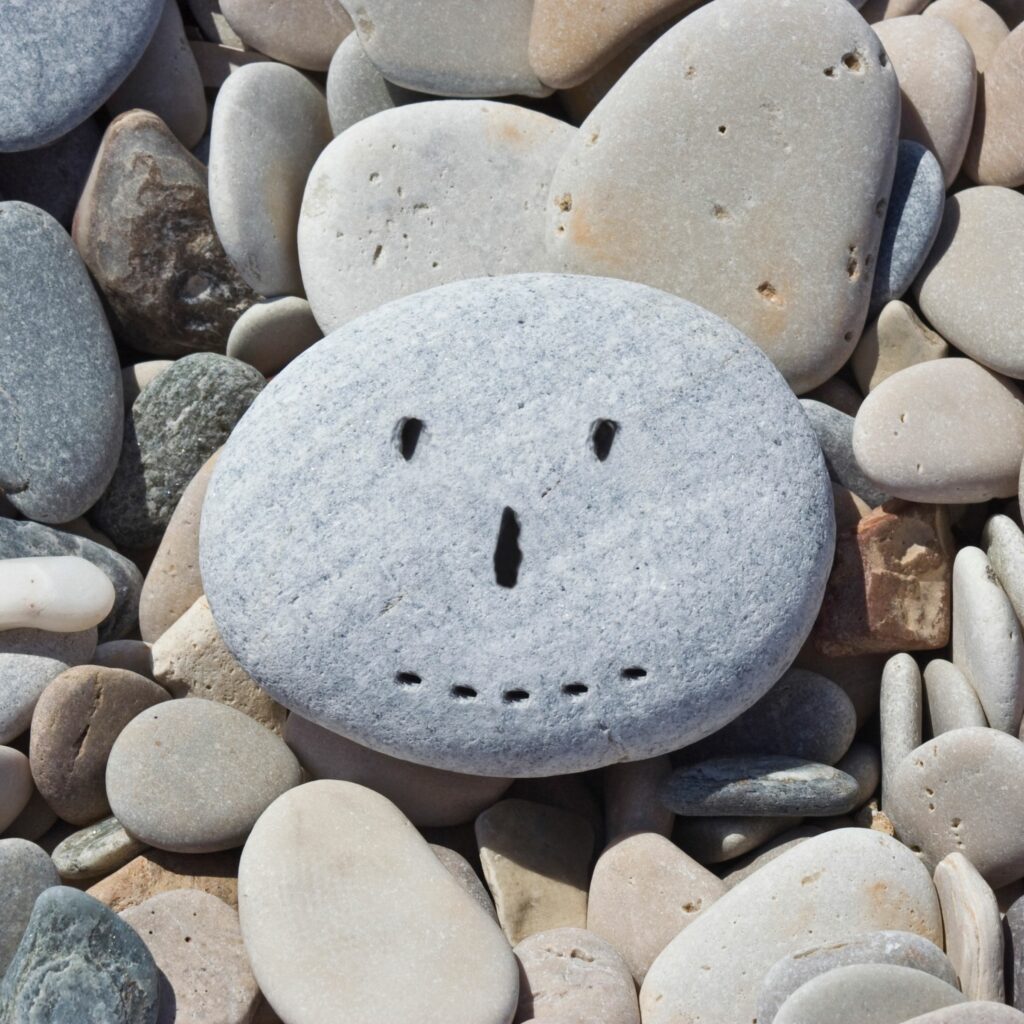Just a touch of gratitude
Reviewed by Susan Radzilowski, MSW, LMSW, ACSW


Along with the holidays come friends, family, and a whole lot of #blessed. Spending time with loved ones at this time of year is supposed to inspire reflection and gratitude for everything we have and the people we cherish.


Except not all our experiences are worthy of gratitude. For some of us, the holidays are a time for loneliness or anxiety, especially when we’re dealing with recent losses or difficult relationships. Should we power through the season with the help of hashtags and inspirational throw pillows, or is it better for our mental health to own and express our pain?
The benefits of gratitude
If you’ve heard it once, you’ve heard it a thousand times: Be grateful for what you have, who you love, or even what you’re not going through. According to psychologist Alyson Stone, PhD, this message enters most people’s lives early on.
“Gratitude is in almost every single religious or spiritual tradition—it’s across the board in our culture, and it’s in our families,” Stone says. “Gratitude is drilled into us, especially from parents if they feel like their kids have it better than they did.”
Rooted in community, family, or faith, gratitude can have many benefits:
- It makes us happier. “A sustained gratitude practice has been shown to bump up happiness levels,” says Stone. Gratitude can also promote prosocial behavior (meaning behavior that helps others) and combat loneliness.1 Studies of specific populations, such as older adults, have found a positive connection between practicing gratitude and feeling more connected socially.2
- It fends off negativity. Gratitude can also help keep negative emotions at bay by replacing them with more positive ones. Research has shown that people with high levels of gratitude have lower levels of resentment, regret, and envy.3
- It helps us sleep. Feeling grateful doesn’t work just for our minds—it also has a positive effect on our bodies. Research is ongoing, but some studies show that gratitude can have a positive effect on sleep, blood pressure, and asthma.4 Because sleep is such an important factor in overall health, improving it can have a big impact.
What does it mean to “practice gratitude”?
Practicing gratitude means actively recognizing the positive things in your life. There are many ways to do this, from keeping a gratitude journal to appreciating a breath of fresh air. Gratitude can be practiced on your own or as part of a group, at work or at home.5
When does gratitude become harmful?
When something painful happens, it can seem easier to sidestep that pain and focus on what’s going well in our lives. We may even carry guilt about feeling bad in the first place. This tendency to force gratitude on ourselves can be harmful and often takes one of the following forms.
Spiritual bypassing
Psychologist John Welwood, who coined the term in the early 1980s, defines spiritual bypassing as “a tendency to use spiritual ideas and practices to sidestep or avoid facing unresolved emotional issues, psychological wounds, and unfinished developmental tasks.”6
Stone has seen this happen often in her 25-plus years of private practice. “Someone will come in and start talking about what’s going on in their lives and how they’re having feelings about it,” she describes. “Then they’ll stop and say, ‘Oh my God, who am I to complain? I mean, I’m not in the wildfires in Oregon,’ for example.”
In that moment, Stone says, they’ve “stopped themselves from feeling and going into what they actually need from their session, and they’ve moved into a concept.” This act of bypassing prevents the client from experiencing the pain of the moment, which is just what they’ve come to therapy to work through.
Toxic positivity
Gratitude can also do damage when it makes us feel like our pain doesn’t matter. “When someone is always positive, there’s not as much room for connection,” says Stone. “Life is very hard. So when someone is overly positive, we tend not to trust them. We don’t feel connected.”
Alongside this distrust, she adds, “There’s a demand for us to also be positive or to hide the things that we’re not happy about, and the message is very invalidating.” In other words, it’s a form of erasure to create a space where someone’s feelings aren’t being recognized.
Being grateful can feel like hard work
If gratitude is baked into our worldview from the beginning, why do we have to work so hard at it? In his 2016 research, Thomas Gilovich, PhD, coined the phrase “headwinds/tailwinds asymmetry,” which he defines as bias in people’s assessments of the benefits they’ve enjoyed and the barriers they’ve faced.7
Gilovich uses the example of football fans who all think their team has the most challenging schedule, or members of both major political parties who believe the electoral college works in the other party’s favor. Overcoming these biases takes work and intention.
Feeling bad can be good for us
To get to the good, sometimes we need to walk through the bad. Stone recognizes that people can be scared to face their feelings, especially if they’re painful.
“We believe that if we go into our sadness, it will overtake us,” Stone says, but in fact the opposite is true. “Left untended, the feelings of pain and sadness will only get bigger,” she explains. “They take up room inside of us, kind of like an unread email taking up room in your inbox.”
There are two key reasons to lean into our negative emotions:
Accepting our bad feelings makes room for good ones. When you move through your feelings and process them, Stone says, you open up space for something else to grow. She gives the example of parenthood. Sometimes a parent can feel anger, even momentary hatred, for their child after an argument or an especially frustrating day. Acknowledging those emotions and working through them, Stone says, can ultimately help you feel more love for your child because you’ve cleared out negative emotions to create space for that love.
Repressing your feelings can harm your body. Everyone experiences negative emotions, but many of us tend to suppress or even repress them. People who pack down those feelings tightly instead of dealing with them are at risk for more stress-related health problems, such as high blood pressure, diabetes, or stroke.8
Dismissing your feelings may seem easier in the short term, but in the long term this avoidance doesn’t benefit anyone—especially you. If you’d like support from a therapist to help process how you’re feeling, browse our directory for a licensed mental health professional near you.
Balancing gratitude
If too much positivity can feel invalidating and too little leaves us wallowing, then what does the right balance look like? There must be a happy medium between embracing gratitude and expressing our other feelings.
“I’m a big fan of the word ‘and’ versus ‘but,’” says Stone. “For example, it’s okay to say ‘I’m grateful to have food on the table and a roof over my head, and I’m struggling.’” Allowing room for both messages, Stone says, can make a big difference.
Holding multiple emotions at once is not only possible, but common. Think about a bittersweet moment from your life: maybe your child’s high school graduation or the day you left a job you liked to pursue a better opportunity. You may have felt grateful, nostalgic, and sad all at the same time.
Part of processing your feelings is giving yourself permission to feel them. So the next time you scroll through your phone in a grumpy mood and spot a #grateful meme, try practicing Stone’s advice: “I am grateful—thanks for the reminder, Instagram—and I’m having a crappy day.”

Sources
1 https://www.ncbi.nlm.nih.gov/pmc/articles/PMC4873114/
2 https://pubmed.ncbi.nlm.nih.gov/31043126/
3 https://www.sciencedirect.com/science/article/abs/pii/S0092656607001286/
4 https://pubmed.ncbi.nlm.nih.gov/32590219/
5 https://www.forbes.com/sites/forbescoachescouncil/2021/12/29/the-benefits-of-showing-gratitude-in-the-workplace/
6 https://www.scienceandnonduality.com/article/on-spiritual-bypassing-and-relationship/
7 https://psycnet.apa.org/record/2016-56495-001/
8 https://academic.oup.com/psychsocgerontology/article/57/5/P396/609409/
About the author
Amye Archer, MFA, is the author of “Fat Girl, Skinny” and the coeditor of “If I Don’t Make It, I Love You: Survivors in the Aftermath of School Shootings,” and her work has appeared in Creative Nonfiction magazine, Longreads, Brevity, and more. Her podcast, “Gen X, This Is Why,” reexamines media from the ’70s and ’80s. She holds a Master of Fine Arts in creative nonfiction and lives with her husband, twin daughters, and various pets in Pennsylvania.
Related articles

Happiness: Definition, benefits, types
Happiness has many benefits. It improves our health and relationships, and...

When you’re having a bad day, knowing how to practice gratitude can make a...
